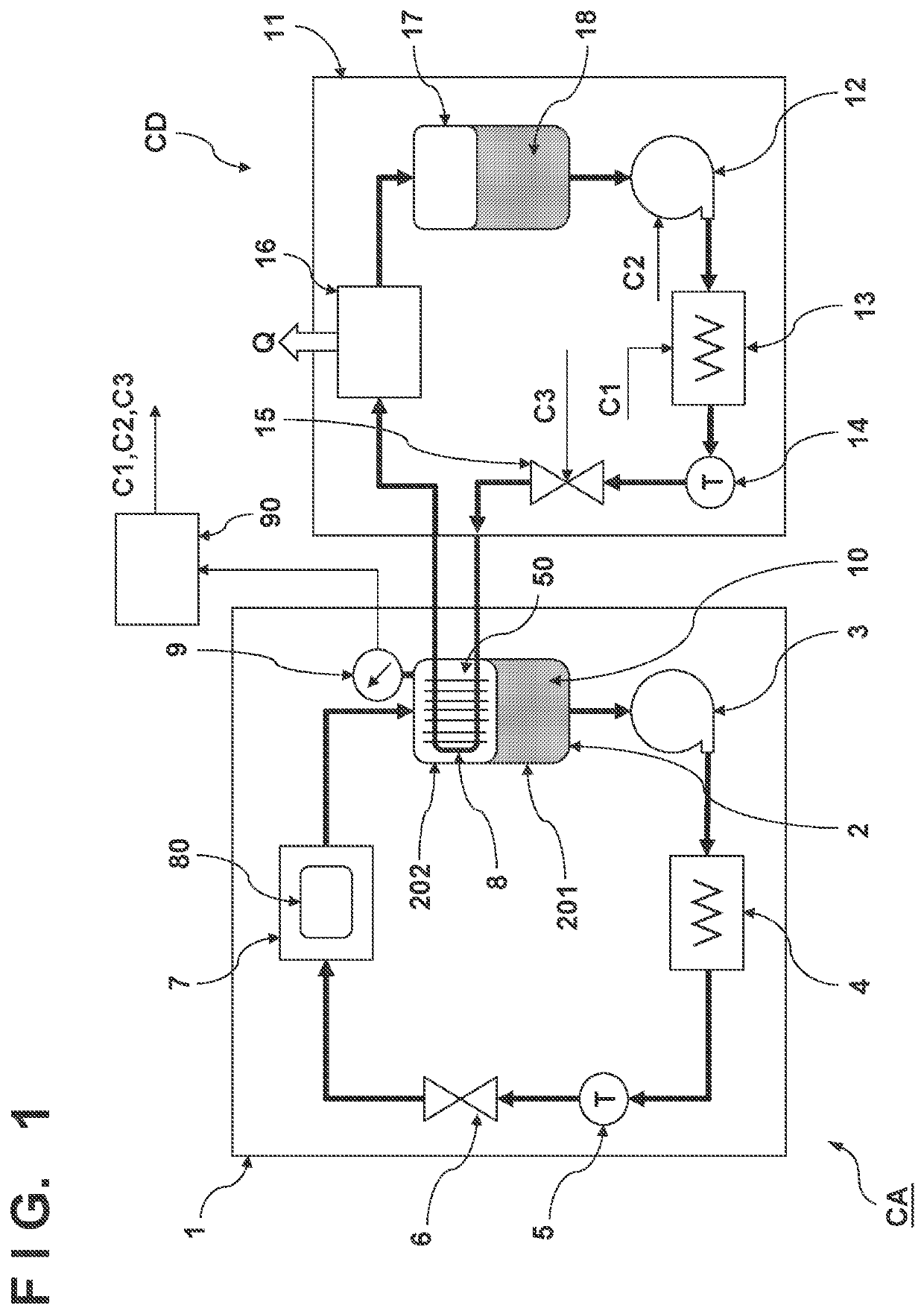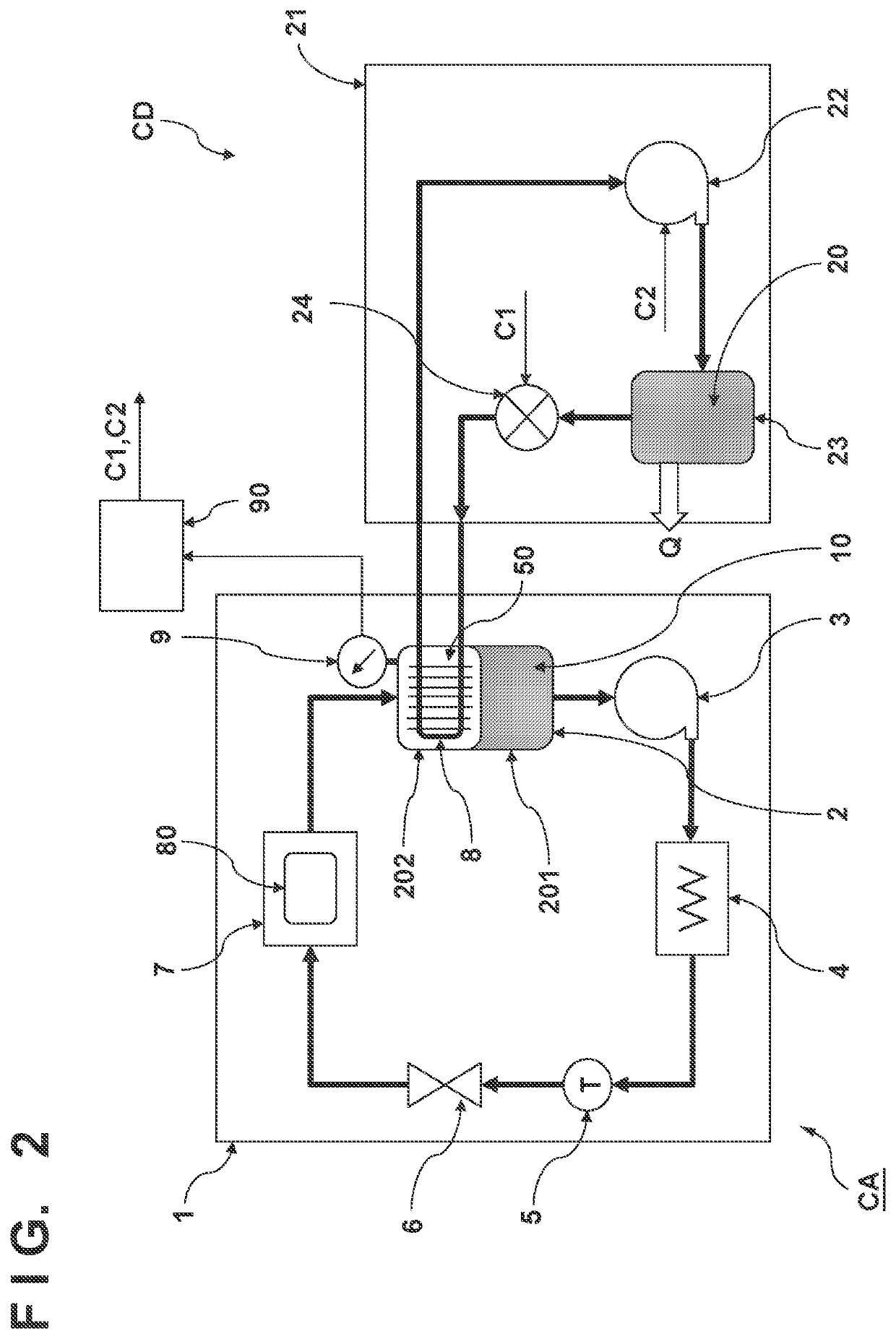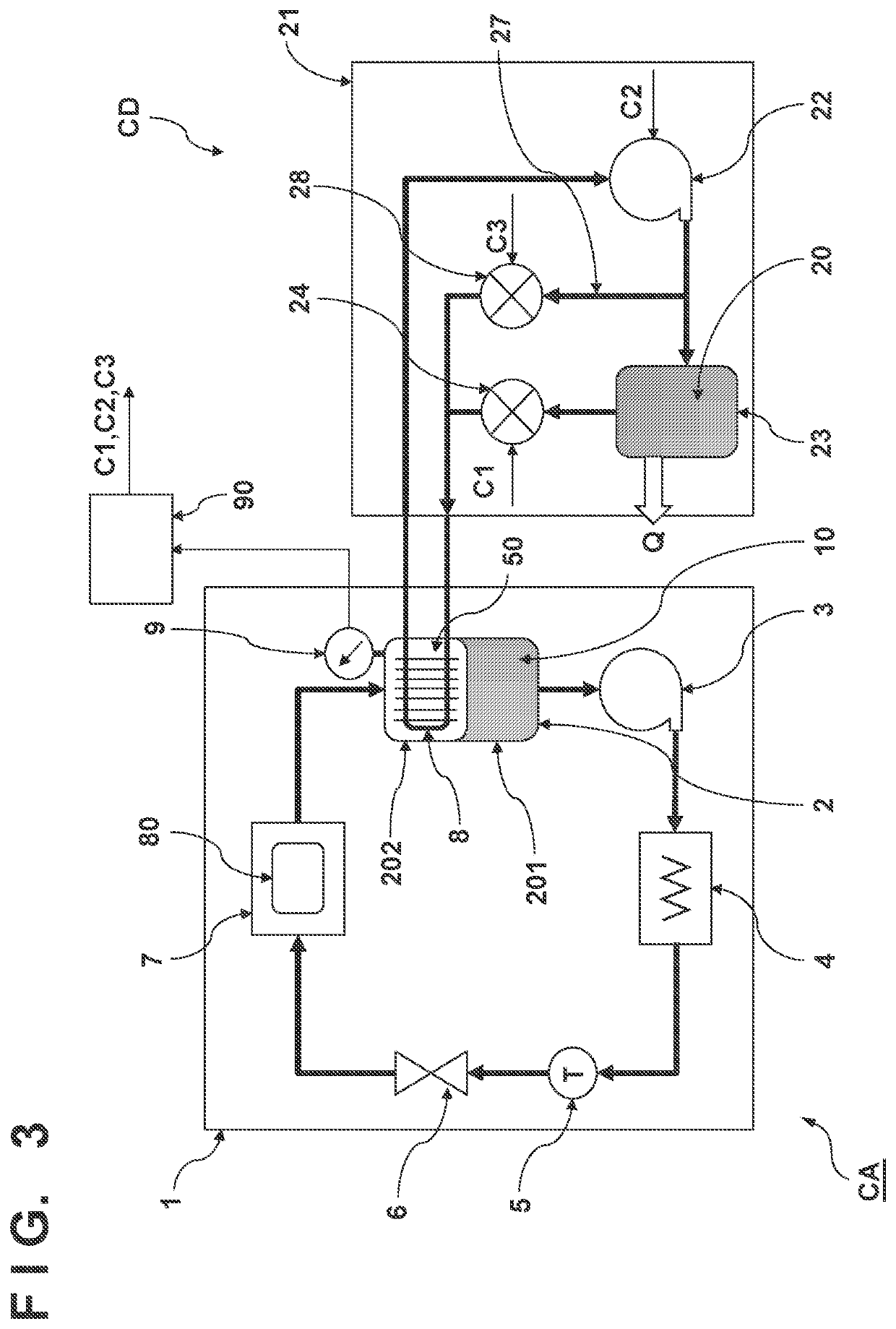Cooling device, semiconductor manufacturing apparatus, and semiconductor manufacturing method
- Summary
- Abstract
- Description
- Claims
- Application Information
AI Technical Summary
Benefits of technology
Problems solved by technology
Method used
Image
Examples
first embodiment
[0021]FIG. 1 shows the arrangement of a cooling device according to the A cooling target of the cooling device CA is not limited to a particular target and can be, for example, a semiconductor manufacturing apparatus and especially the heat generating portion of the semiconductor manufacturing apparatus. The semiconductor manufacturing apparatus can be a pattern formation apparatus such as an exposure apparatus, an imprint apparatus, or an electronic beam lithography apparatus, or a plasma processing apparatus such as a CVD apparatus, an etching apparatus, or a sputtering apparatus. The pattern formation apparatus includes a driving mechanism that quickly moves a component such as a substrate and / or an original. The driving mechanism generates heat along with driving of an article and can become a heat generating portion. In the plasma processing apparatus, a component such as an electrode is heated by plasma and the component can become a heat generating portion.
[0022]The cooling ...
third embodiment
[0038]In the third embodiment, a hot bypass path (bypass path) 27 has been added to a second circulation system 21. The hot bypass path 27 is arranged to bypass a main path from a compressor 22 to a heat exchanger 8 via a second condenser 23 and an expansion valve 24. The hot bypass path 27 branches from a channel between the compressor 22 and the second condenser 23 and merges with a channel between the expansion valve 24 and the heat exchanger 8. A regulating valve 28 can be arranged in the hot bypass path 27.
[0039]A second refrigerant 20 that passes through the hot bypass path 27 is not condensed (liquified) since it does not pass the second condenser 23. Hence, the second refrigerant 20 does not have the cooling ability generated by the latent heat of vaporization. A controller 90 can generate control signals C1, C2, and C3 for controlling the expansion valve 24, the compressor 22, and the regulating valve 28, respectively, so that the pressure or the temperature of a first refr...
fourth embodiment
[0042]In the fourth embodiment, a heater 4 is formed by a heat exchanger (second heat exchanger). In the cooling device CA, a third circulation path 31 that branches from a channel between a compressor 22 and a second condenser 23 and returns to the compressor 22 via the heater 4 (second heat exchanger) is arranged. A second regulating valve 30 can be arranged in the third circulation path 31.
[0043]A controller 90 can generate control signals C1, C2, and C3 for controlling an expansion valve 24, the compressor 22, and a regulating valve 28, respectively, so that the pressure or the temperature of a first refrigerant 10 inside a heat exchanger 8 will be a predetermined value based on an output from a sensor 9 of a first circulation system 1. In addition, the controller 90 can also generate a control signal C4 for controlling the second regulating valve 30 so that the temperature of the first refrigerant 10 detected by a temperature sensor 5 will be a predetermined value based on an o...
PUM
 Login to View More
Login to View More Abstract
Description
Claims
Application Information
 Login to View More
Login to View More - R&D
- Intellectual Property
- Life Sciences
- Materials
- Tech Scout
- Unparalleled Data Quality
- Higher Quality Content
- 60% Fewer Hallucinations
Browse by: Latest US Patents, China's latest patents, Technical Efficacy Thesaurus, Application Domain, Technology Topic, Popular Technical Reports.
© 2025 PatSnap. All rights reserved.Legal|Privacy policy|Modern Slavery Act Transparency Statement|Sitemap|About US| Contact US: help@patsnap.com



